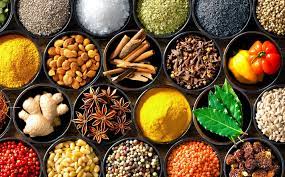F.P. Report
ISLAMABAD: Poor eating often exacerbates aging problems, resulting in inadequate protein intake among older adults. This, in turn, may cause muscle wasting, reduced function, and poor quality of life. A new research paper looks at the role of spices in boosting the attractiveness of typical foods in this age group.
With aging, muscle mass tends to be lost at about 3-8% per decade. This begins after the age of 30 and accelerates after 60. The results include osteoporosis and physical disability, as well as frailty.
A healthy, balanced diet can reduce the decline in muscle mass and cognition, along with exercise. However, older adults tend to eat less protein than the required 1-1.2 g/kg/day.
The reasons may include poor appetite, loss of taste sensations, loss of teeth, insufficient financial capacity, and food intolerances. Culinary spices could help increase food appeal, promoting a higher intake of high-protein foods. This was the subject of the current study, published in the journal Nutrients.
Seasonings, sauces, and gravies have been studied for their ability to enhance food flavor. However, little is known about how meat vs. vegetarian meals compare with respect to protein intake or how spices can combat the reduced perception of flavor, increasing the subject’s liking for the food and eventually boosting intake.
The study included 109 community-dwelling older adults. Of these, half received a meat appetizer, the other half a vegetarian one. Among the entrees, half contained spices, and the others only salt and pepper. All foods were tender and easy to chew and swallow.
The two groups were chosen to meet the current recommendations to include more plant-based foods in the diet. All meals had matching caloric and macronutrient content.
The different study groups crossed over so that everyone could compare the different types of entrees served in this study. In addition, the study looked at how much the older adults ate, how they liked the food, and how strong it tasted.
What did the study show?
The study failed to show any significant difference in the amount of food consumed with all types of entrees. This was also true of the amount of protein consumed during the whole meal. The mean energy intake ranged between 15 and 20% of the total daily energy expenditure.
About 74% and 80% of those served ordinary and spiced chicken salad consumed adequate protein with this meal, at 0.4g/kg body weight at each meal. In contrast, the vegetarian arm (beans/rice salad) consumed 0.25 g/kg/meal on average. Only about one in five achieved the target intake of 0.36 g/kg/meal in the vegetarian entrée group.
This is because chicken has a three times higher protein density than a vegetarian meal. Though participants in both groups ate until they were full, the vegetarian group could not eat enough to hit the recommended protein intake target. The challenge failed to match the protein density for the two meal versions, despite the vegetarian meal providing 25% higher energy compared to the meat meal.
While over 90% met the US recommended dietary allowance for this meal in the meat group, between 50% and 60% did so with vegetarian entrees.
When spices were added to the vegetarian entrée, the participants reported liking the entrée and the whole meal better. This is understandable as vegetarian meals are less flavorful on the whole compared to chicken meals.
Spicing up the meat led to a better relish for the entrée alone. Although the slight increase in liking reported for both entrée and meal is predictable, as chicken is a well-liked and flavorful meat, participants did not appear to like the spiced-up version of the meat more than the ordinary version.
Notably, two-thirds of the participants denied any reduction or claimed an increase, in their sense of food flavor or smell, compared to when they were younger (30-35 years). They reported better flavor intensity with the spiced versions of both meal types respectively.
Females, especially with a body mass index of 25 or more, perceived greater flavor with the spiced chicken salad and whole meal, but males with the spiced vegetarian version as well as for the whole meal.
Those with a history of coronavirus disease 2019 (Covid-19) six or more months before the study sensed less flavor with the spiced meat meal than those who were Covid-19-naïve.
What are the implications?
Adding spices increased flavor intensity and liking for the food in both meat and vegetarian versions. But, surprisingly, it did not improve consumption. Earlier research shows that liking is not always related to intake.
In fact, while increased flavor may not make the food seem more palatable, it can improve intake, as shown in another study. However, more research is required to identify the factors that drive total protein and food consumption. The study also shows that it is challenging to achieve adequate protein intakes among elderly and less active individuals with plant-based foods alone unless food fortification with complete protein is possible or foods with high protein density are chosen. (Online)







